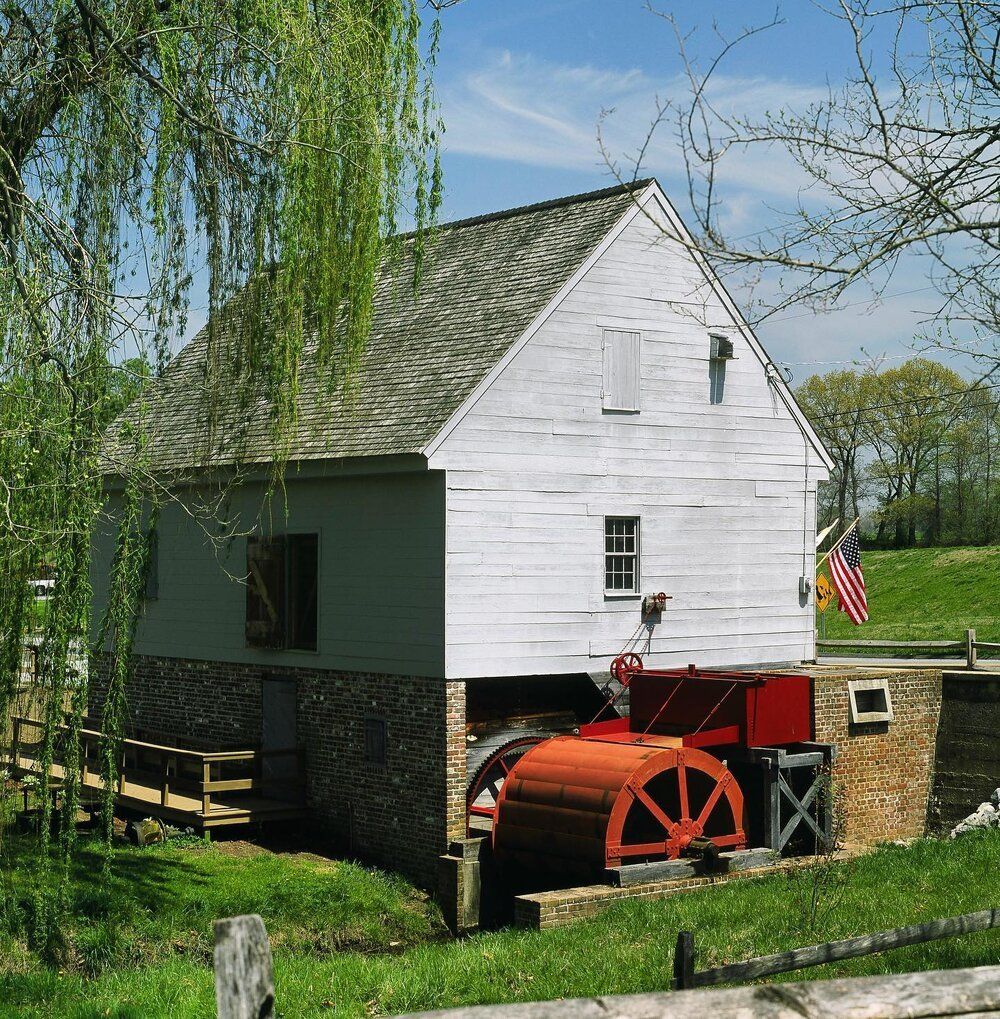18th Century Grist Mill Technology on the Mid-Shore

Old Wye Mill. All photos from website, with permission
Most Common Sense readers who are asked to describe technology will think of smartphones, computers, or car GPS systems. Or perhaps they’ll picture a spotless factory populated by algorithmical-AI-guided robots assembling autos. Everything they imagine would depend on invisible electronic processes that most can neither observe nor understand.
Assuming our Eastern Shore predecessors understood the word “technology” as we do, their images would include no glass, plastic, electrical wires, printed circuit boards, lithium-ion batteries, CPU chips, or satellites.
But if technology is, at least partly, the application of science to producing goods and services, our 18th and 19th century predecessors surely had their own, with their materials including wood, wooden gears, leather belts, iron axles, cloth, and stone. Their machinery was mostly handmade, and its operation visible.
In the mid 17th century, a water-powered grist mill was constructed near the village of Wye Mill, Md. Over a 300-year period, several more mills were built to grind wheat and corn into flour for the local community.
In fact, Upper Eastern Shore mills provided much of the flour that fed the rebellious colonists in the American Revolution. At that time, flour production was complicated, inefficient, and labor-intensive.
Eventually, in the late 18th century, Oliver Evans (1755-1819), an under-recognized mechanical genius, installed his innovative machinery at the Wye Mill, which transformed flour and meal production.
At that time in conventional mills, eight or ten mill hands typically would carry grain, flour, and waste up and down three or more floors. But Evans’s ingenious system only required one or two people. In addition to its efficiency, Evans’s grist mill technology enclosed the process at all stages to eliminate dust, pebbles, stalks, and vermin and their droppings. Enclosing the process also protected the workers’ health by reducing dust.
Edward Barrowcliff built the Old Wye Mill in 1682. Recent tree science research has dated the structure’s wooden frame to the winter of 1753-1754. In 1780 during the American revolution, local mills, including the Wye Mill, sent 48,000 barrels of flour to the Continental Army, earning the Eastern Shore the title of “breadbasket” of the revolution. In 1790, Thomas Jefferson, then United States secretary of state, granted the third U.S. patent to Evans for his automated flour mill. Then, in the first years of the 19th century, the automated milling technology was fully installed.
The mill continued grinding grain for sale until 1953 when the state of Maryland bought the mill. This mill is one of the oldest business buildings still in use in the state. Perhaps more significantly, Old Wye Mill is the oldest continuously operating water-powered grist mill in the United States. Much of our 21st century technology may not last as long.
The Friends of Wye Mill (a non-profit) now has responsibility for the mill’s preservation and operation. The mill was placed on the National Register of Historic Places in 1985, and in 1996, Preservation Maryland passed ownership to the Friends group.
Located at 900 Wye Mills Road on Rte. 662, the Old Wye Mill welcomes visitors from May to October, Wednesday through Saturday, 10:00 a.m. to 3:00 p.m., and Sunday 1:00 to 3:00 p.m. On first and third Saturdays, wheat and corn are stone-ground into flour, meal, and grits, and sold in the gift shop. The shop also offers pottery, jams, and maple syrup.
Trained docents guide visitors. Children will enjoy and learn from mill activity backpacks. Group tours may be arranged through the mill office by telephone at 410-827-3850.
References:
Old Wye Mill web site
“Want to Build Your Own Grist Mill? Oliver Evans Explains It All!” Unbound, Smithsonian Libraries and Archives, Feb. 7, 2010
“Old Wye Grist Mill still grinding after all these years,” T.F.Sayles, Bay Journal, Apr. 18, 2019
“Here and There in Maryland,” American Archive of Public Broadcasting, aired Nov. 1, 1978
https://americanarchive.org/catalog/cpb-aacip_394-67jq2pb1
(starts 41:00)
Maryland Farm and Harvest, Episode 801, Maryland Public Television, aired Nov. 10, 2020
https://video.mpt.tv/video/episode-801-leypmm/
(starts 19:56)
Old Wye Mill on Google maps
Jim Block taught English at Northfield Mount Hermon, a boarding school in Western Mass. He coached cross-country, and advised the newspaper and the debate society there. He taught at Marlborough College in England and Robert College in Istanbul. He and his wife retired to Chestertown, Md. in 2014.
Common Sense for the Eastern Shore









